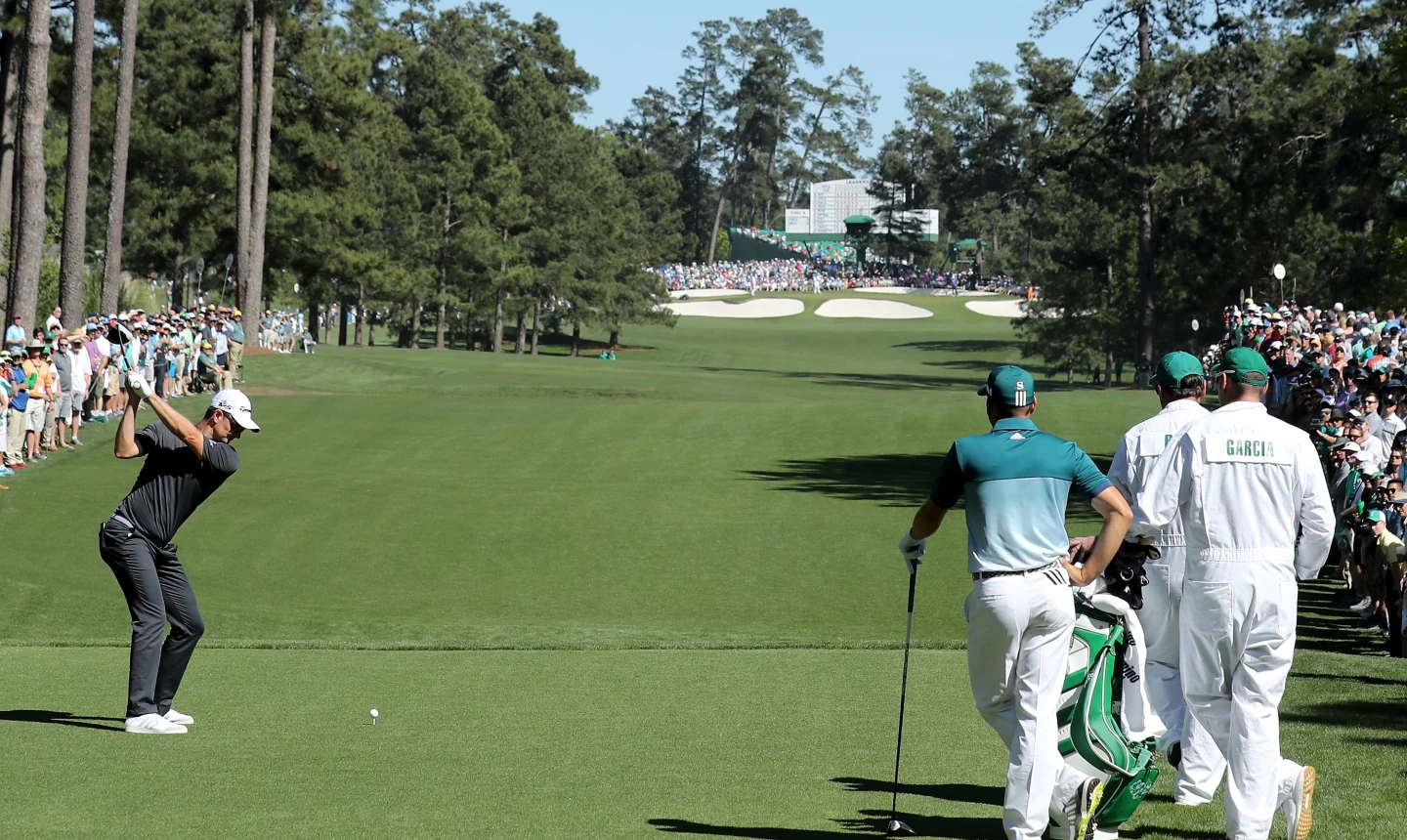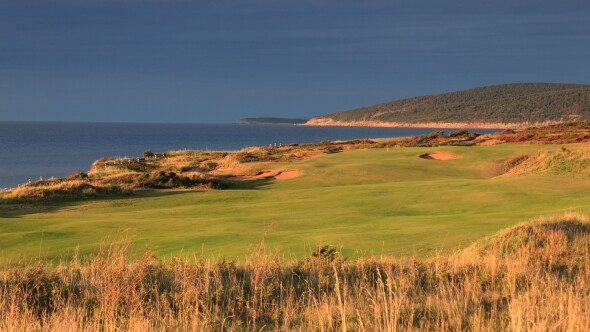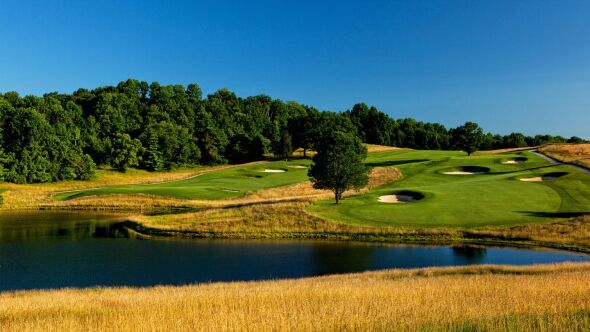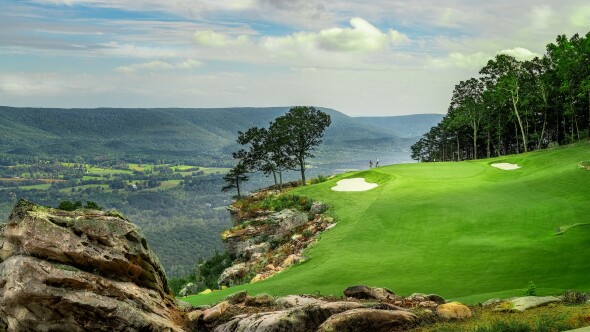With daily round tickets going for upwards of $2,500 on the open market and area hotels jacking their prices up 3x-10x the normal rate, there’s no need to sulk about staying home and watching this year’s Masters Tournament from the comforts of your living room. The $1.50 pimento cheese sandwiches are overrated anyway. So here’s a couch potato’s guide to American golf’s rite of spring.
1. There’s more than meets the eye out there. The course is massive, thanks to over 80 acres of fairway, more than twice your average course. The nursery converted into Augusta National Golf Club in 1932 exists on a scale that even the widest HDTV can't capture. The grounds comprise 365 acres and include the main course and a nine-hole par-3 layout, a massive double-ended range, luxurious hospitality suites, a gracious plantation-style clubhouse, half a dozen member cabins, the coolest media center in all of sports and a maintenance complex whose floor is clean enough to eat from and where every rake and shovel has its own numbered slot.
2. It’s steeper than it looks. The best television cameras in the world still cannot convey vertical scale adequately. From top to bottom, there’s 173 feet of elevation change on site, with the highest point just behind the first green and the low point the fairway before Rae’s Creek in front of the 155-yard, par-3 12th green. The 495-yard, par-4 10th hole alone tumbles 105 feet from tee to the area between the fairway bunker and the green. Small wonder drives there will easily travel 325-350 yards, leaving short irons in to the green. Even more bewildering is the scale of the uphill shots.
3. It’s narrower off the tee than it looks. For all the horizontal scale of the place, it can feel awfully narrow at times. On some tee shots it feels as if the mature pines are crowding in on both sides. The average golfer from the back tee would suffer claustrophobia from the Masters tees.
From the back tee of the 465-yard par-4 18th hole, you would be excused for thinking that the towering tree canopies actually course the line overhead and touch from both sides. The tee shot on the 450-yard par-4 7th hole is narrow down both sides the entire length of the fairway. On the 505-yard par-4 11th hole, newly planted pine trees down the right unduly constrict the hole all the way down the right. At the dogleg left, 510-yard par-5 13th hole, you have to work the ball from right to left to avoid running through the fairway into woods – but not with so much curve that you overcook it and hit the trees and a tributary of Rae’s Creek down the left side. The 440-yard par-4 17th hole also plays out of a narrow chute.
In other words, the place is tighter than you can imagine from those back tees and requires players to shape their tee shots – predominantly right to left. What makes that last hole so awkward is that all of a sudden, after virtually an entire round of draws (except for Phil Mickelson and Bubba Watson), the player is suddenly asked to play it left to right, and to start it through a thimble.

The 7th tee shot is one of the narrowest at Augusta National.
4. It’s all about the greens. At an average of 6,435 square feet, Augusta National’s bentgrass greens are bigger than average, but not enormously so. By comparison, Pebble Beach sports greens that only average 3,500 square feet; The greens at the Straits Course at Whistling Straits, by contrast, average 8,000 square feet. The smallest at Augusta National is on the notoriously elusive par-12th hole, only 4,135 square feet. The largest is also the most contoured: at the 440-yard par-4 14th hole, where the putting surface measures 9,880 square feet. It’s the only bunkerless hole, but the six-plus feet of elevation change and the multiple mini-platforms on that single green provide all the defense the hole needs.
5. Those maddening contours. What really makes the Masters a nerve-wracking trial is the discipline required to handle these contours. They are three-dimensional in character, given how they not only contain all sorts of compelling breaks but also because they fall off and spill the ball out onto the surrounds. Miss it a little here and you can look like you’ve missed it a lot. All of which is quite by design, as per a revealing essay by course co-designer Alister MacKenzie (with Robert Tyre “Bobby” Jones) called, appropriately enough, “Plans for the Ideal Golf Course.” There, MacKenzie concedes to modeling the following Augusta National greens after those at the Old Course in St. Andrews:
4th at Augusta National – 11th at St. Andrews
5th at Augusta National – 17th at St. Andrews
7th at Augusta National - 18th at St. Andrews
14th at Augusta National – 6th at St. Andrews
17th at Augusta National – 14th at St. Andrews (reversed)
It has to be admitted that what MacKenzie refers to as the 7th green hole no longer exists after Perry Maxwell moved it up the hill in 1938. Still, the overall concept remains at Augusta National, of a links course in a parkland setting. That unique combination of quirky bounces amidst a lush green setting makes for extraordinary television. It’s a couch potato's dream. Welcome to the ultimate in home viewing.
















As I’m unlikely ever to be lucky enough to get to the Masters, thank you for your wonderful description and history of the course. I’ll delight in showing of your knowledge to my friends as we watch things unfold over the next 3 days. Thank you.
Wonderful explanation.
I will be able to see the Masters on TV more deeply.
Thanks for the explanation about the secret of nature of Augusta National golf course by linkage with St. Andrews links course.
What are the widths of the (said narrow) fairways? And length please (to drive pitch area). Is the weather ecpected to play a part in April?
I'd have to confirm this but tight fairway cut of circa 0.35-inch is probably 40-50 yards wide and tightening down somewhat to 35-40 yards in the primary landing areas. That's wider than almost all tournament courses. Holes with side slop have more width - 9, 10, 15. With weather Saturday will mean more receptive greens on Sunday, which should produce a birdie fest.
Brad, what's your feeling about 13, and the proposed changes to lengthen it? Why not move it up and make it a par 4?
I would think there's some reluctance to change 13 to a par-4 given the importance at ANGC of historical comparisons over time. It would undercut all of the old scoring records to do so. There is plenty of room to add 40-50 yards to the hole given the land deal with neighboring orange Augusta CC and I think we'll see that in the next year or two.It's much easier to move a tee than to move a green to accommodate distance. The key will be whether the side slope in the (new) landing area would allow for the same line of play as the existing (old) one. What they don't want is people trapped early short left behind the trees after a solid drive with no option but to bail out short.
It is a beautiful, beautiful environment! Everything is as close to peregection as it could be and gets better every year. Plus courteous staff and volunteers. Loved the pro ledger of attending personallt
Hi,
I was at Augusta back in 1997, first year for Tiger. The most magnificent golf coarse that I've ever been on. I have been on a lot of nice ones. I still have my folding chair that I'm waiting to see Tiger, so I can get it signed. I'm happy to see Tiger is back. My money is on him as it was back in 1997. Good luck guys, have a great tournament, but most of all enjoy yourselves.
Augusta....”Heaven on Earth “